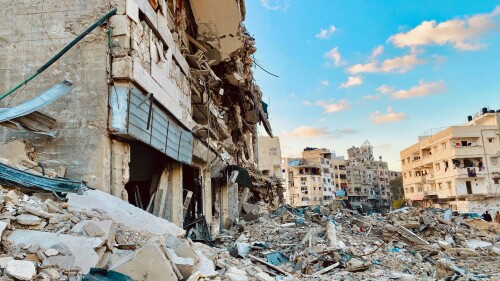...
What form is further Iranian action against Israel likely to take following the recent exchange of fire on the border betwee the Golan Heights and Israel?
Iran has a number of options. It possesses a global terror infrastructure and might seek to attack an Israeli facility or an Israeli or Jewish target abroad. In the past, Teheran and Hizballah have sought retribution in this way. The attack in 1994 on the Amia Jewish community centre in Buenos Aires, and the murder of Israeli tourists in Burgas, Bulgaria, in 2012 are examples of this.
Alternatively, Iran could instruct its Lebanese Hizballah proxies to carry out an attack on Israeli forces across the border from Lebanon. This is how Teheran sought to retaliate for the killing by Israel of a number of Revolutionary Guards and Hizballah personnel close to the Golan Heights in January 2015.
Israeli planners were expecting Iran’s retaliation for the nine dead militiamen was likely to be carried out in Syria, probably with the help of Shia militia personnel on the ground. It was not the first time Iranian personnel have been killed by Israel on Syrian soil. But it was the first time Iranian facilities, not those of proxy groups, were targeted. The Iranian action on May 10 was the first time Israel was directly targeted in a real-time conventional military operation led by the Revolutionary Guards. This is likely to set the pattern for further events to come.
So where is all this heading? Israel’s Defence Minister Avigdor Lieberman has said that allowing Iran to consolidate its infrastructure in Syria would be “agreeing to the Iranians placing a noose around our necks”. This, the defence minister said, would be prevented “at all costs”.
It is not entirely clear, of course, what “consolidation”, “entrenchment” and their prevention actually mean, or could entail. Does Israel require that all presence of the Iranians be removed from Syria, down to the last proxy fighter? If so, then conflict between Teheran and Jerusalem is a near inevitability, since there is no chance of Iran acquiescing to this except by coercion. On the other hand, if the Israeli intention is to prevent the Iranians from transferring certain weapons systems into Syria – advanced anti-aircraft systems, ballistic missiles, UAVs – then conflagration may not be so imminent.
Iran has an interest in keeping to what it is good at. What it is good at is developing paramilitary proxy political-military organisations. This is the key to its success in Lebanon, Syria, Iraq and Yemen. What it is much less good at is conventional warfare, particularly in the air. The country has a poorly equipped, Cold War-era air force. It possesses ballistic missiles capable of reaching Israel, to be sure. But Israel has in recent years developed in cooperation with the US some of the most advanced missile defence systems in the world. Iran’s own defences against Israeli retaliation, meanwhile, are far less developed.
This means that Iran may well prefer to absorb Israeli strikes, carrying out a token retaliation for form’s sake. Such an approach would derive not from pacific intentions. Rather, the Iranians would calculate that it is in their interests to continue to quietly build their strength in Syria, while absorbing periodic Israeli disruptions of their arrangements. Since the Iranians may well be engaged, as in Lebanon and Iraq, in a project concerned with the long-term transformation of these countries into clients/puppets of the Islamic Republic of Iran, the immediate settling of scores may not be deemed of paramount urgency.
Of course, this begs the question as to whether Israel will wish to acquiesce to the pursuit of such an Iranian strategy, with all it implies for the future security of Israel. In the meantime, following the fire and smoke of the night of May 10, and until the next move, we are back to the waiting period.
Jonathan Spyer is a fellow at the Middle East Forum and an associate fellow at the Jerusalem Institute for Strategic Studies







